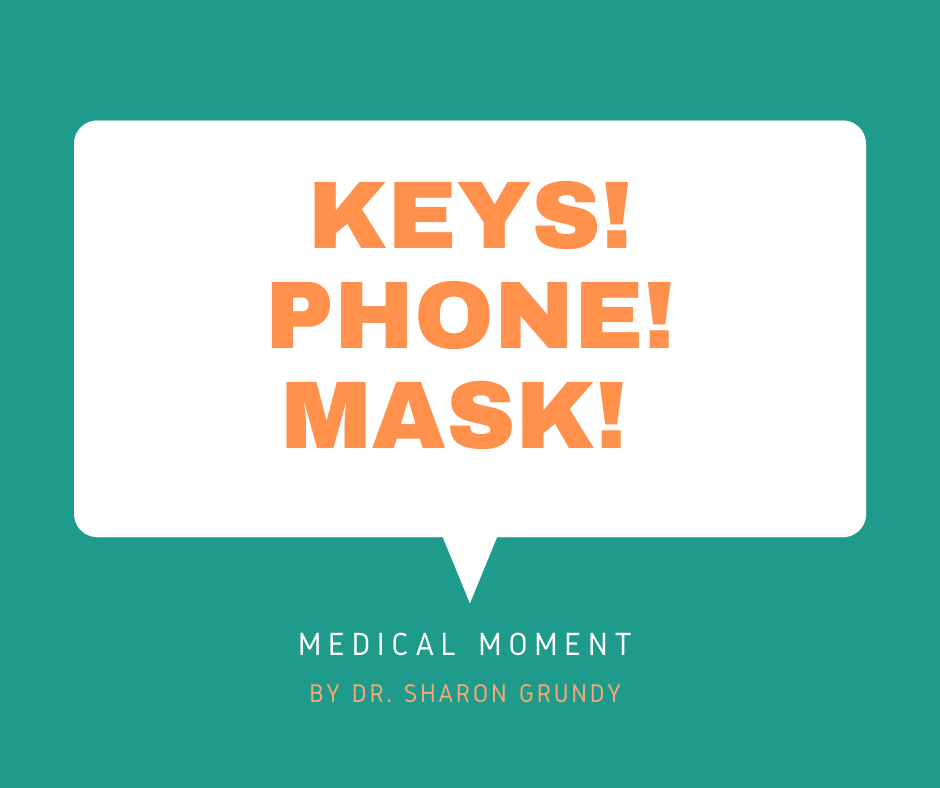
09 Sep Telluride Med Center: Keys! Phone! Mask!
The following is a note from Dr. Sharon Grundy of the Telluride Medical Center and County Health. Support the Med Support Fund here. And go here to read more about Covid-19 transmission through aerosols.

Dr. Sharon Grundy,P rimary Care Medical Director, Telluride Medical Center & County Health Director.
My new mantra every time I go anywhere is now: “Keys-Phone-Mask! Keys-Phone-Mask!”
Our new normal requires all of us — including our children 3 years and older — to be vigilant about wearing masks in public: indoors, and outdoors when we are not able to socially distance.
This is not political. COVID-19 has no party affiliation and may strike any of us.
We know wearing masks works thanks to evidence-based science. Most people do trust our infectious disease specialists, and do embrace this simple measure as part of everyday life — at least for the foreseeable future.
Here’s what we know about how the disease is spread:
COVID 19 is most often spread via respiratory droplets found in saliva, mucus and phlegm, which you may or may not see expressed in a cough or a sneeze, for example. Virus transmission through these contaminated droplets is dependent on variables such as environmental temperature, airflow and humidity.
The virus also requires access, which is why behavior makes a difference. Wearing a face mask and maintaining physical distancing is proven to mitigate the spread of the virus.
I recently read a study in which researchers found wearing a face mask significantly reduced so-called “droplet clouds,” a phenomenon in which droplets are able to evade evaporation, thereby considerably extending the lifespan of the droplet from seconds to minutes.
Additional findings from the same study demonstrate how when a person wearing a mask coughs, the respiratory droplets travel half as far as when he is not wearing a mask.
Researchers note that severe coughing events while wearing the same mask may deteriorate mask efficiency. That being said, without a mask, droplet amount, size, distance, and threat is higher than with a mask.
It’s important to note new research shows the type of mask matters.
Neck gaiters and bandanas allow leakage through and around the mask and are not as effective as face masks that fit securely over your mouth and nose.
A tight-fitting mask can still allow for undesirable leakage, so check that it fits securely all the way around. Some masks provide filters that offer more protection, but are not mandatory.
Wash your hands before applying your mask and get comfortable placing it to such that you do not touch your face. Be sure to wash your mask after daily use.
This is obvious, but don’t share masks with others. Discard masks that develop a hole or no longer fit securely.
Researchers stress that face coverings provide protection to both the person wearing the mask, as it will block respiratory droplets expelled from another person, as well as those around them.
Face masks alone do not provide 100% complete prevention of COVID transmission, but it significantly lowers the risk. That’s why I encourage all of us to get into the regular practice of wearing a mask.
The combination of wearing face masks and maintaining social distancing are the two most important behavioral measures we can take to help lower our risks, get our kids back to school and keep our community healthy.
Please join me in creating your own mantra to remind yourself to do your part!


Sorry, the comment form is closed at this time.